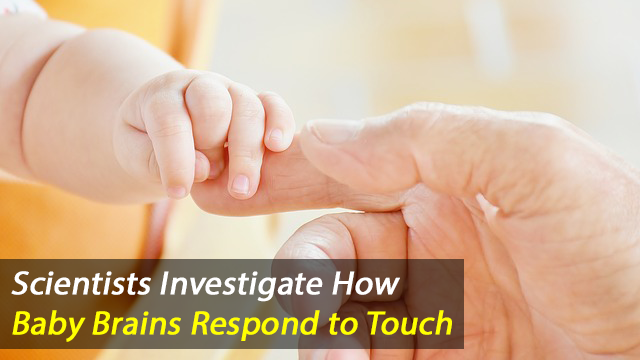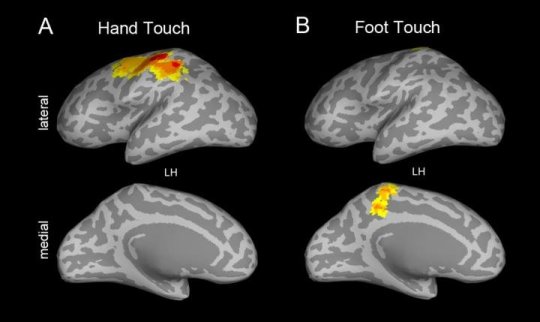Indeed another "Touching sight" revealed by Scientists: How infant brains process body touch an contacts that builds a foundation for Learning

The sense of touch (Contact) is the first amongst the five séances to e developed by a human brain system, yet scientists have very little knowledge on how the baby's brain relate to touch, than to response to the sight of a mother's face or the voice. Now, with the help of research and discoveries, safe and new brain imaging techniques have been provided by university of Washington's researches, which has provided one of the first look inside the infant's (babies) brain to observe and show exactly where the since of touch is processed in the brain, not just when the touch of a hand or foot is felt by the body, but also when the baby sees the foot and hand of an adult being touched also.
The proof of activities in the Somatosensory Cortex for both "felt touch" and "Touch Observed" has shown that a basic 7 month old baby already have made a basic connection between their own self and another human being which experts say lays down the groundwork for learning and imitating from the behavioural patterns of other people and for emphasy purposes.
"Long before babies acquire spoken language, touch is a crucial channel of communication between caregivers and babies," said the study's primary author, Andrew Meltzoff, UW psychology professor and co-director of I-LABS.
The tools are now available to see how the infants body is being represented in the baby's brain. This gives the opportunity to notice or catch the first glimpse of a primary sense of self that makes available a building block for lerning socially.
Researchers used the Magnetoencephalographic (MEG) Machine of the I-LABS to capture the images of the brain activities in 7 month old babies as they experience touch on their hands and foot and as they watch videos of adults hand and foot touched.

The scientist researchers were specifically interested in the brain's somatosensory cortex, this region is being described as a strip of tissue in the brain running between the ears and over the Top of the head. It is in the somatosensory cortex, in separate places and different stages of strength that the human brain processes the touch to various parts of the body.
During the first experiment, each infant baby was positioned in the MEG to quantify brain activities as they encountered light touches. A little inflatable ballon-like device was positioned on the top of the infants hand, when it inflamed an contracted according to a time table controlled by the computer, it produced some light taps on the infant's skin. The same procedure was also done for the Top of the infants foot. The test data showed that, when the infants hand was touched, the hand region of the S.C ( somatosensory cortex) was activated in all the 14 brains that undergo the testing. Likewise as the foot was touched, there was activation occurance in the foot region of the brains of all the infants but one.
When a different group of infants was tested, a different data was provided and as they were seated in the MEG, they watched separate videos of adults hand, foot being touched by an object. And it was also discovered that their own sonatosenaory cortex was also activated as they watched someone else touched. The response to "Observed touch" was a weaker one compared to "felt touch". A touch to one's self will generate stronger brain activity in the "SC" than observing another persons hand being touched..
This new evidence for shared neural regions processing touch to self and touch to others makes sense, Meltzoff said. As parents know, babies watch and imitate what adults do. Imitation is a powerful learning mechanism for infants, but in order to imitate, infants have to perceive how body parts correspond. In other words, they need to reproduce the same movement with the same part when they imitate what their parent is doing. Scientists have wondered how infants make this connection. "Before they have words for the body parts, babies recognize that their hand is like your hand, and their foot is like your foot. The neural body map helps connect babies to other people: The recognition that another person is 'like me' may be one of the baby's first social insights," Meltzoff explained.

With this kind of development, the feeling we get when someone else is touched eventually flowers unto having empathy for others.. For instance, if you see someone who accidentally hit a hammer on their thumb, there is every tendency that the observer rapidly or imperceptibly recoil by moving his or her hand. This shows a shared neural body map which connects one's self to another come into manifestation.
The idea of using this MEG brain science to observe how and when humans first have a since of feel of connectivity to others, which is important and very fascinating.. With the help of this machine, it is now possible to look and observe what happens when an infant watches and connects to others " This Sight Is A Very Touching One"..